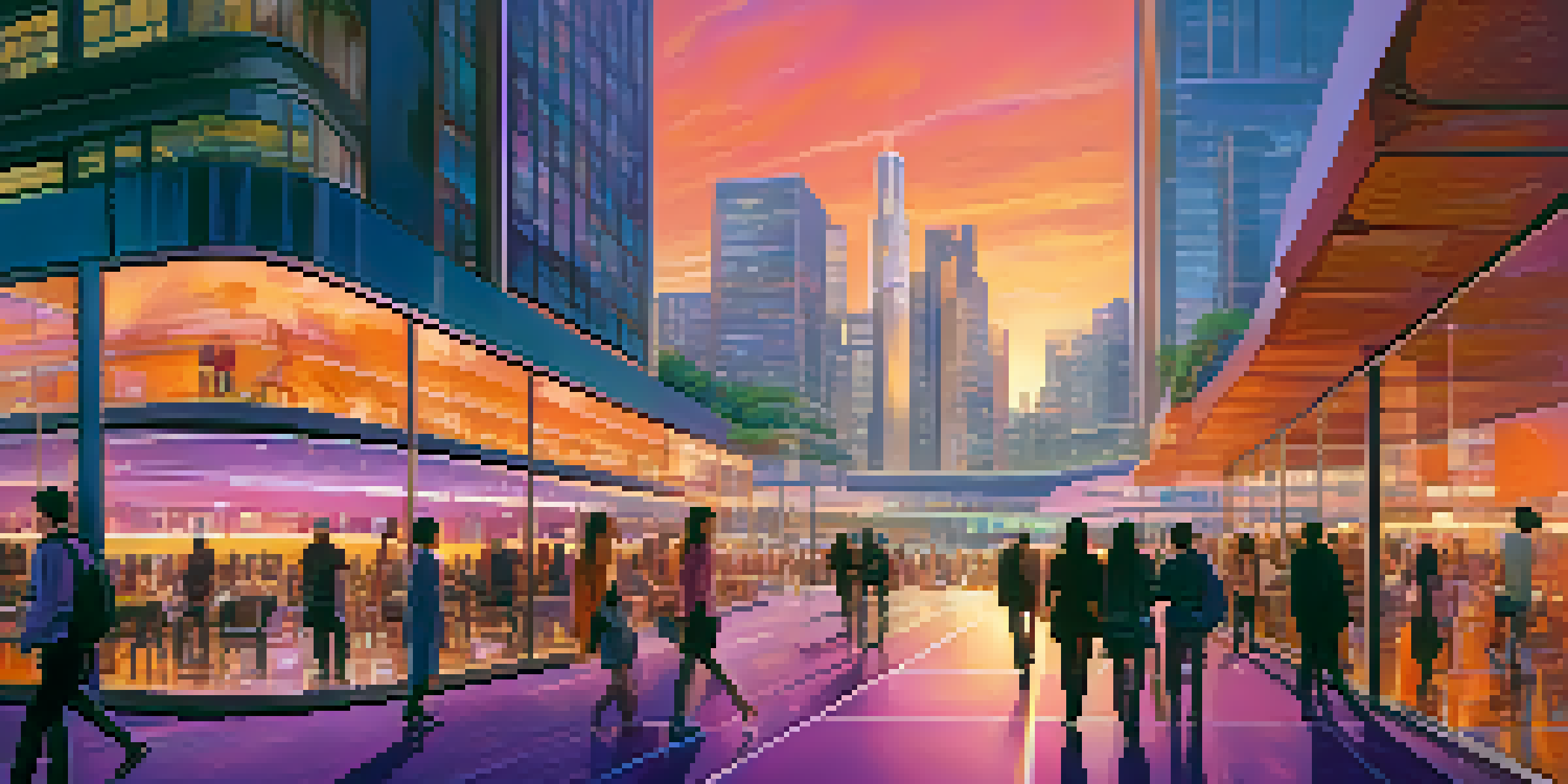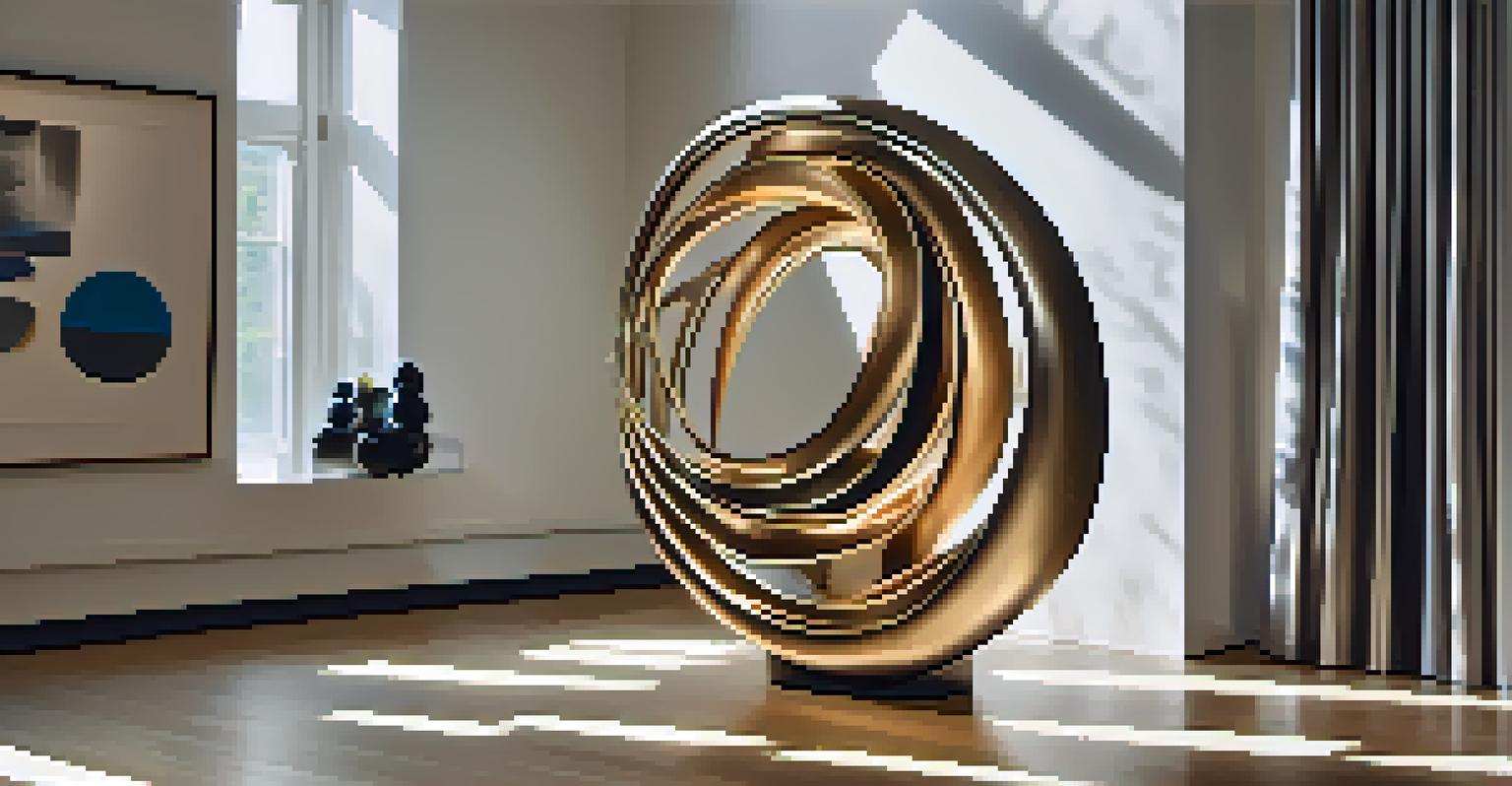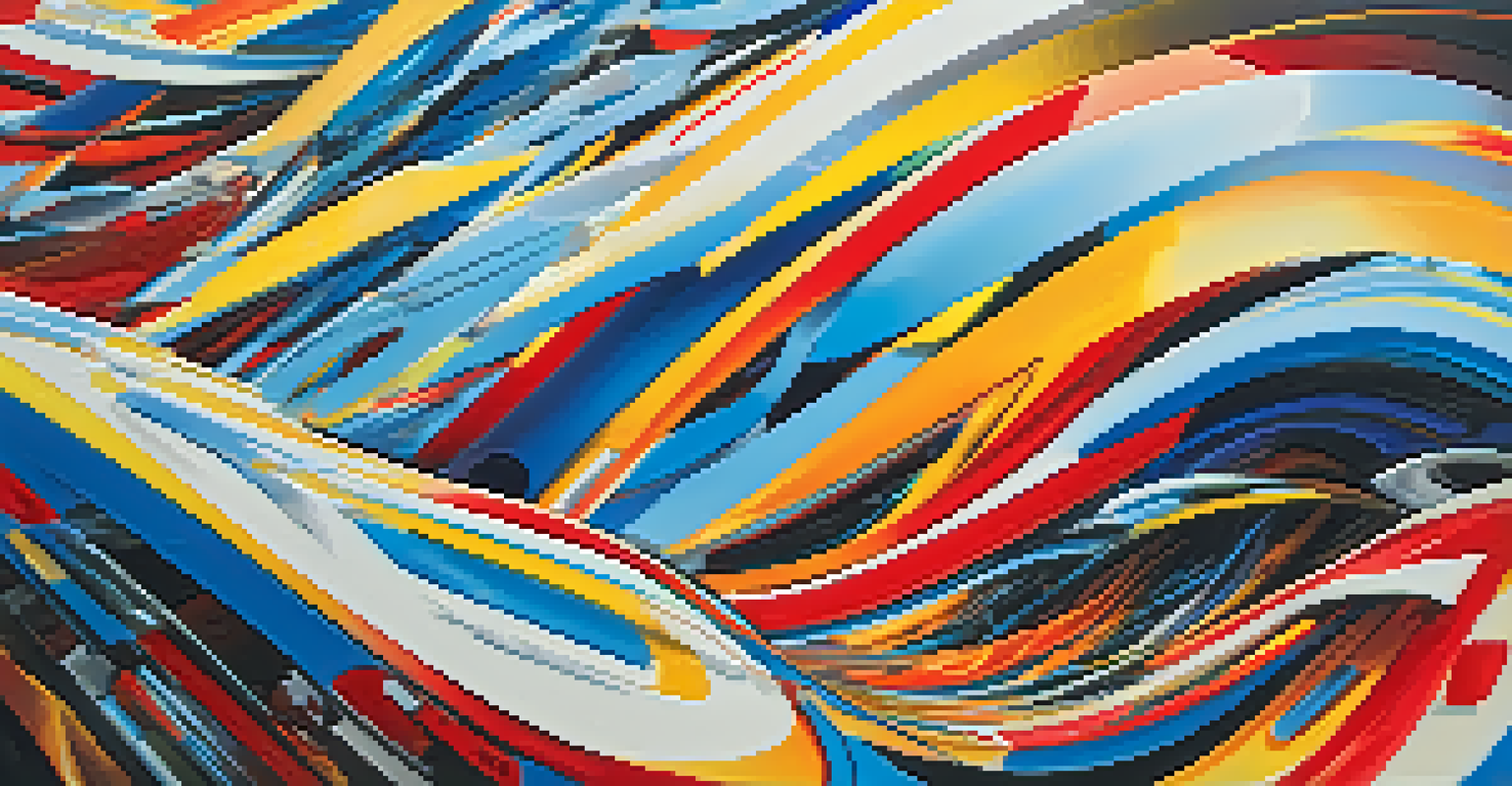The Origins of Futurism: A New Era in Modern Painting

Understanding Futurism: A Revolutionary Movement
Futurism emerged in the early 20th century as a bold reaction to the traditional art forms that dominated the previous century. This movement aimed to capture the energy and dynamism of modern life, reflecting the rapid technological advancements of the time. With roots in Italy, Futurism was defined by its celebration of speed, machinery, and the beauty of urban landscapes.
Time and space died yesterday. We already live in the absolute, because we have created eternal speed.
The movement's manifesto, penned by F.T. Marinetti in 1909, called for a complete break from the past, advocating for a new aesthetic that embraced modernity. Marinetti famously declared that 'time and space died yesterday,' emphasizing the need to reflect the new realities of the industrial age. This radical perspective inspired artists to create works that conveyed movement and emotion, often through vivid colors and dynamic compositions.
Futurism not only influenced painting but also extended into literature, music, and even architecture, marking a significant shift in how art interacted with society. As the movement gained momentum, it attracted a diverse group of artists, each bringing their unique vision to the Futurist table. This collective energy fueled a new era of creativity, forever altering the landscape of modern art.
Key Figures in the Futurist Movement
Futurism was driven by several key figures whose innovative ideas and works helped shape the movement. In addition to F.T. Marinetti, artists like Umberto Boccioni and Giacomo Balla played pivotal roles in defining the visual aspects of Futurism. Boccioni's iconic sculpture 'Unique Forms of Continuity in Space' exemplifies the movement's emphasis on fluidity and motion, capturing the essence of a figure in movement.

Giacomo Balla, known for his vibrant colors and dynamic compositions, created works like 'Dynamism of a Dog on a Leash,' showcasing the interplay of speed and energy. His paintings often depicted subjects in motion, emphasizing the Futurist belief that art should reflect life in all its rapid change. These artists, among others, contributed to a rich tapestry of ideas that characterized the Futurist movement.
Futurism: A Bold Artistic Revolution
Futurism emerged in the early 20th century as a radical movement that celebrated modern life, technology, and the energy of urban landscapes.
The collaboration among these artists fostered a spirit of experimentation, pushing the boundaries of traditional forms and materials. They sought to merge art with the experiences of modern life, ultimately creating a visual language that resonated with the changing times. This camaraderie among Futurist artists was instrumental in solidifying the movement's impact on the art world.
The Futurist Manifesto: A Call to Action
The Futurist Manifesto, published in 1909, served as a rallying cry for artists and thinkers eager to break free from artistic conventions. Marinetti's passionate prose urged a rejection of the past, encouraging artists to embrace the energy of the present and the possibilities of the future. This manifesto laid the groundwork for the core principles of Futurism, emphasizing the importance of speed, technology, and youth.
Art can be nothing but violence, cruelty, and injustice.
One of the most striking elements of the manifesto was its celebration of violence and conflict, reflecting the turbulent socio-political landscape of the time. Marinetti argued that war was a necessary catalyst for progress, an idea that would later spark significant debate among artists and intellectuals. This controversial stance underscored the Futurists' desire to provoke thought and challenge the status quo.
The manifesto's bold declarations inspired an entire generation of artists, encouraging them to explore new themes and techniques. It became a foundational text for those seeking to redefine art in the context of a rapidly changing world. By articulating a vision for the future, the Futurist Manifesto galvanized a movement that would leave a lasting legacy in the art world.
Futurism's Influence on Modern Art
Futurism's impact on modern art cannot be overstated, as it paved the way for subsequent movements like Cubism and Dadaism. The emphasis on abstraction, fragmentation, and the exploration of movement found in Futurist works resonated with artists looking to break away from traditional representation. This departure from realism opened the door for innovative approaches to visual storytelling.
Artists began to explore new techniques, such as collaging and the use of mixed media, challenging the boundaries of what art could be. The Futurist focus on technology and modernity inspired new ways of thinking about subject matter, leading to a shift in how artists engaged with the world around them. This spirit of experimentation encouraged a generation of artists to push the limits of their creativity.
Key Figures Shaped the Movement
Artists like F.T. Marinetti, Umberto Boccioni, and Giacomo Balla played pivotal roles in defining Futurism's visual language and principles.
Moreover, Futurism's legacy can be seen in the way contemporary artists incorporate themes of speed, technology, and urban life in their work. The movement's influence extends beyond painting, impacting various disciplines such as performance art and design. As a result, Futurism remains a vital touchstone in the ongoing dialogue about the relationship between art and society.
Futurism and the Role of Technology
One of the defining characteristics of Futurism was its deep connection to technology and the modern world. The artists of this movement viewed technology as a source of inspiration, reflecting the rapid advancements in machinery, transportation, and communication during the early 20th century. This fascination with technology manifested in their art, capturing the essence of the industrial landscape.
For instance, Boccioni's works often included elements that conveyed speed and movement, mirroring the technological innovations of the time. The use of dynamic lines and bold colors in their paintings echoed the energy and excitement of a world transformed by machines. This celebration of technology was not just about aesthetics; it represented a fundamental shift in how artists perceived their role in society.
The Futurists believed that art should engage with the modern experience, and technology was a crucial part of that narrative. Their works often depicted scenes of urban life, showcasing the interplay between man and machine. This relationship between art, technology, and society continues to resonate today, as contemporary artists explore similar themes in their work.
Criticism and Controversy Surrounding Futurism
Despite its revolutionary ideals, Futurism faced significant criticism from various quarters, particularly due to its association with nationalism and militarism. The movement's glorification of war and violence raised ethical questions about the role of art in society. Critics argued that such sentiments could lead to dangerous ideologies, especially in the context of the World Wars that followed.
Moreover, the Futurists' rejection of traditional values and their aggressive stance against established art forms left many in the art community feeling alienated. Some viewed the movement as overly radical, while others felt it lacked the depth and emotional resonance found in other artistic movements. This tension between innovation and tradition created a complex dialogue about the purpose of art.
Legacy of Futurism in Today’s Art
Futurism's themes of speed, technology, and experimentation continue to influence contemporary artists, ensuring its relevance in modern art.
The controversies surrounding Futurism serve as a reminder of the powerful intersection between art and politics. While the movement inspired countless artists, it also sparked debates that continue to this day about the responsibilities of artists in the face of societal change. This duality highlights the lasting significance of Futurism within the broader narrative of modern art.
The Legacy of Futurism in Contemporary Art
Futurism's legacy endures in contemporary art, where its themes of technology, speed, and urban life continue to inspire new generations of artists. The movement's emphasis on experimentation and breaking norms resonates with today’s creative minds, who seek to challenge conventions and explore uncharted territories. In many ways, Futurism laid the foundation for the postmodern art landscape.
Many contemporary artists draw on Futurist principles, merging traditional techniques with modern technologies to create innovative works. Digital art, for instance, often reflects the same fascination with speed and movement that characterized Futurism, demonstrating the movement's relevance in a tech-driven world. Artists today are not only influenced by Futurism but also engage in a dialogue that reinterprets its ideas for new contexts.

Furthermore, exhibitions and retrospectives dedicated to Futurism continue to celebrate its contributions to art and culture. By examining the movement's impact and relevance, modern audiences can appreciate the complexities of Futurism. Ultimately, the enduring influence of Futurism underscores its importance in the ongoing evolution of art, reminding us that innovation and creativity are timeless pursuits.